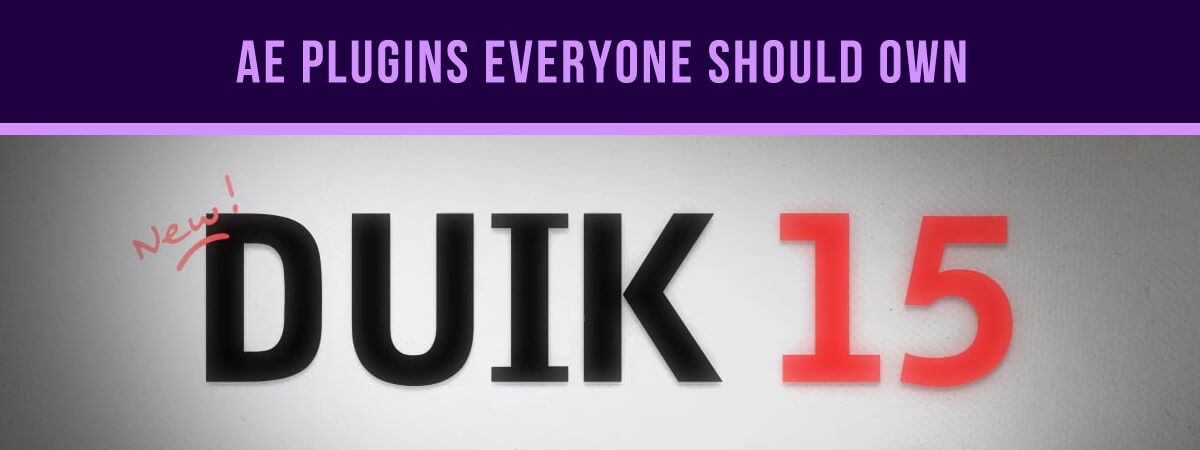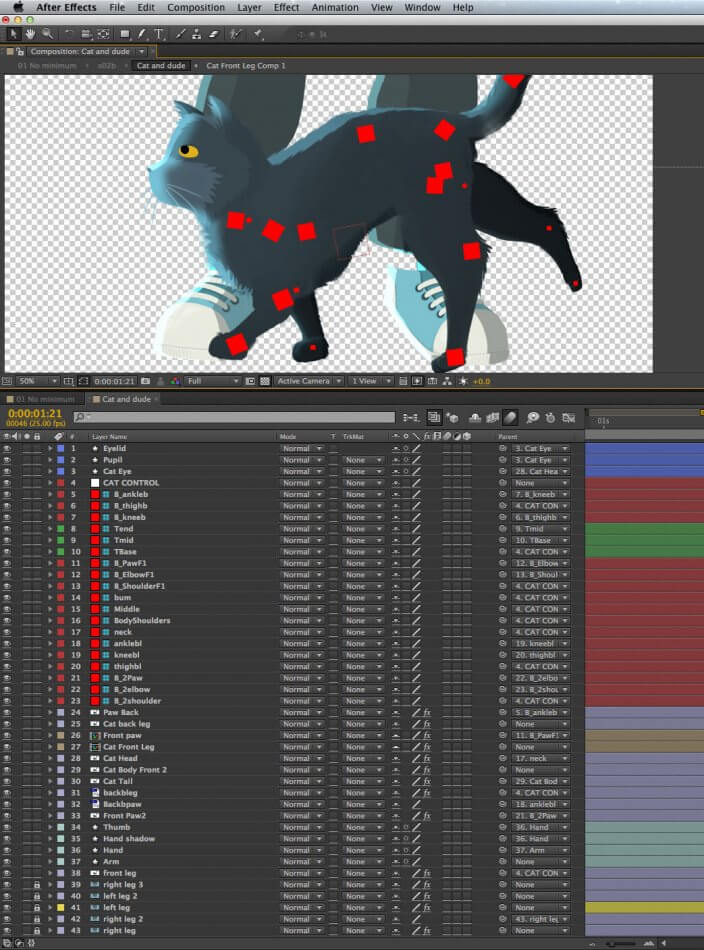This article is part of a series about After Effects plugins; each looking at how a particular project was made and how the plugin contributed to the end result.
Duik is a comprehensive rigging system that uses After Effects’ existing puppet tools to rig joints with inverse kinematics (which controls how joints behave by bending when the ends are brought together). This allows users to move limbs simply, realistically (if that’s the look you’re going for), and with a huge amount of control.
We’re going to look at a series of animated adverts we made for online supermarket Etefy, which used Duik for a lot of the character animation. We kept the animation as simple as possible throughout this series, as the ambitious story telling and restrictive duration meant that each scene had to be concise and to the point – Duik help us give each character a lot of personality in their short amount of time they were on screen.
In the scene where the cat rubs against the guy’s legs at 6 seconds, we needed to get across the loving, needy personality of the cat, so the audience could really empathise with it, and understand the guy’s future actions.
Duik has ‘AutoRig’ options that work with 2 or 4 legged characters to provide a basic skeleton. We often wind up customising this skeleton a little depending on the requirements of the character and scene, but it’s a great starting point. When you have the bones in the correct places, Duik makes the process of animating a lot more intuitive. Instead of grabbing a keyframe or puppet pin that represents a hand, moving that in to position, then moving the upper arm, then the lower arm, and then adjusting the hand again to get it exactly where you need it, Duik allows you to simply grab the hand itself and move it to where it needs to be – the rest of the arm will obey the rules of inverse kinematics to get to the right place.
This more fluid way of animating allows us to spend more time concentrating on the personality of the character, and less time on the technical aspects of ‘getting from A to B’.
Summary of Duik:
We’ve used Duik in much of our After Effects based character animation projects since we discovered it about 5 years ago, and have found it invaluable.
There are some limitations that need to be worked around:
- the bending of a limb can only go so far before the distortion becomes evident. We often switch to a second puppet, rigged with After Effects’ basic parent/child rig, if the character needs to bend their arms all the way.
- This also applies to foreshortening, which is difficult to achieve realistically in Duik. It works best with strong side or front silhouettes.
- The system is slightly prone to crashing, it’s worth decreasing the AutoSave to every 10-15 minutes
- Duik seems to rasterise the images as it bends them. This is unnoticable when the character is at the same scale as it was built, but if the puppet is scaled up or zoomed in on, the loss of quality will be evident. For this reason it’s important to build the puppets at the largest scale that will be needed.
But on the whole, Duik is a big gun in the arsenal of any animator. And, instead of payment, the makers ask only for a donation to help them continue to develop the technology, so you only pay what it’s worth to you.



